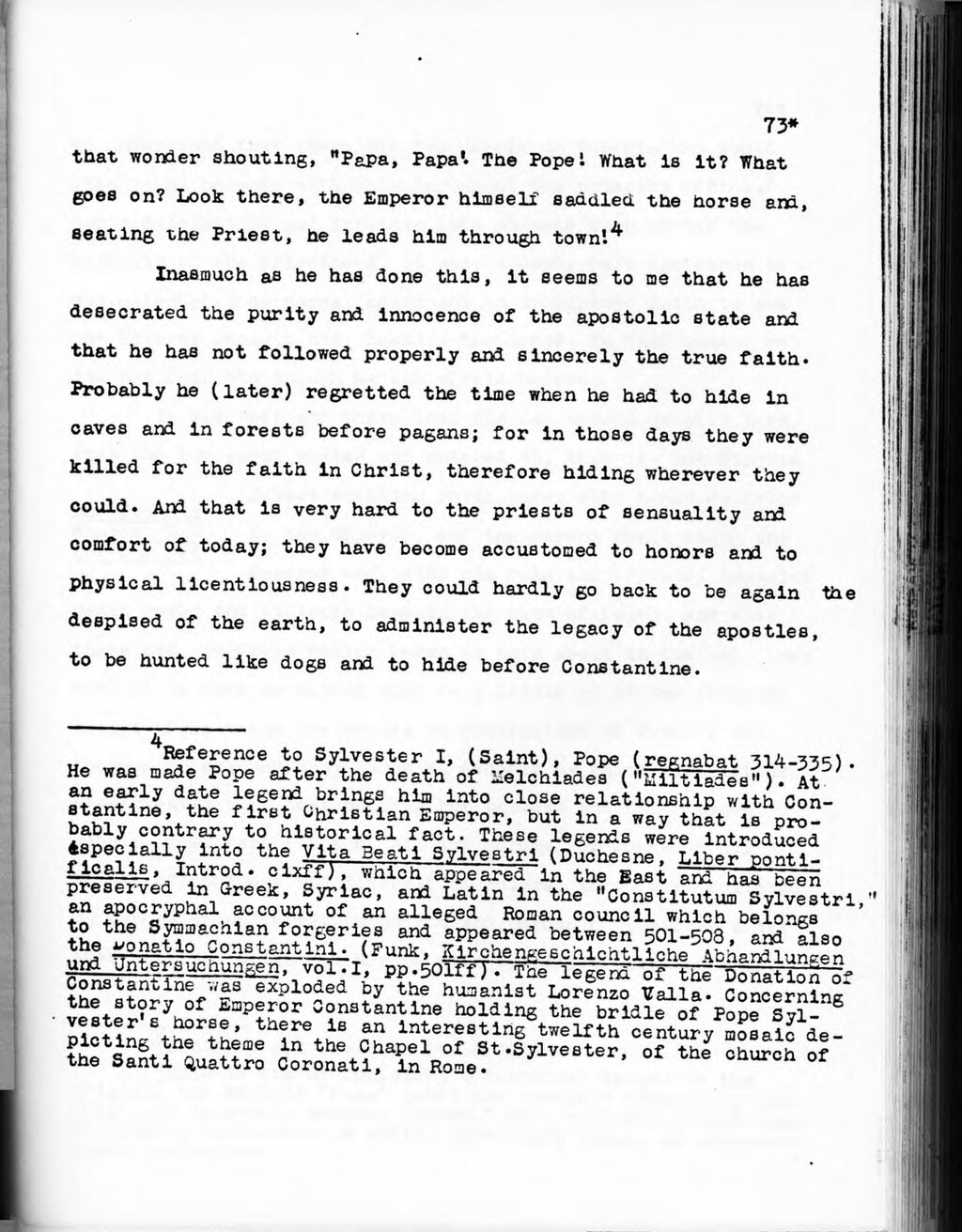that wonder shouting, "Papa, Papa! The Pope! What is it? What goes on? Look there, the Emperor himself saddled the horse and, seating the Priest, he leads him through town!4
Inasmuch as he has done this, it seems to me that he has desecrated the purity and innocence of the apostolic state and that he has not followed properly and sincerely the true faith. Probably he (later) regretted the time when he had to hide in caves and in forests before pagans; for in those days they were killed for the faith in Christ, therefore hiding wherever they could. And that is very hard to the priests of sensuality and comfort of today; they have become accustomed to honors and to physical licentiousness. They could hardly go back to be again the despised of the earth, to administer the legacy of the apostles, to be hunted like dogs and to hide before Constantine.
4 Reference to Sylvester I, (Saint), Pope (regnabat 314–335). He was made Pope after the death of Melchiades ("Miltiades"). At an early date legend brings him into close relationship with Constantine, the first Christian Emperor, but in a way that is probably contrary to historical fact. These legends were introduced especially into the Vita Beati Sylvestri (Duchesne, Liber pontificalis, Introd. cixff), which appeared in the East and has been preserved in Greek, Syriac, and Latin in the "Constitutum Sylvestri," an apocryphal account of an alleged Roman council which belongs to the Symmachian forgeries and appeared between 501–508, and also the Donatio Constantini. (Funk, Kirchengeschichtliche Abhandlungen und Untersuchungen, vol.I, pp.501ff). The legend of the Donation of Constantine was exploded by the humanist Lorenzo Valla. Concerning the story of Emperor Constantine holding the bridle of Pope Sylvester's horse, there is an interesting twelfth century mosaic depicting the theme in the Chapel of St.Sylvester, of the church of the Santi Quattro Coronati, in Rome.
